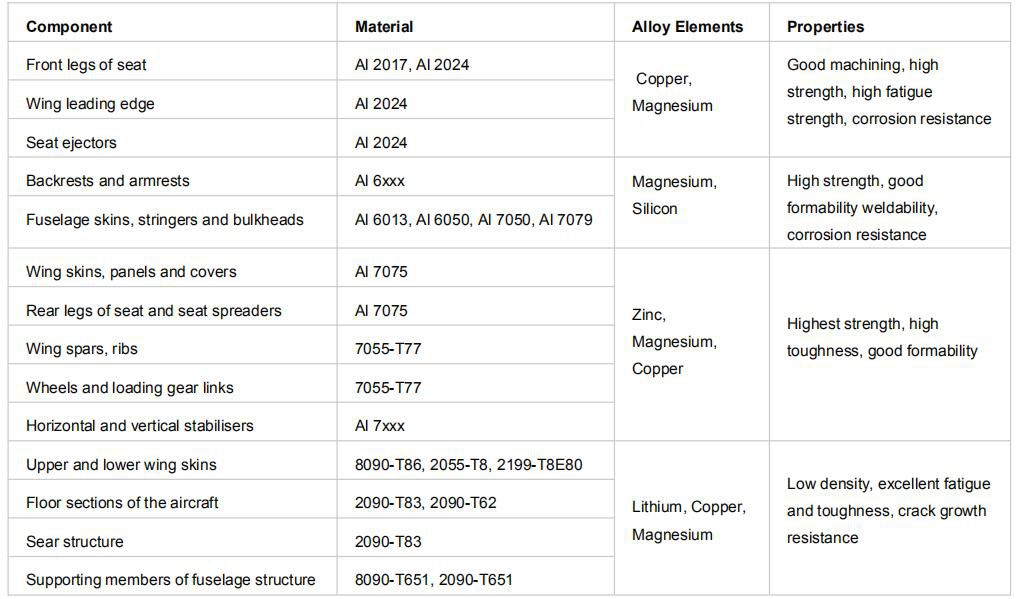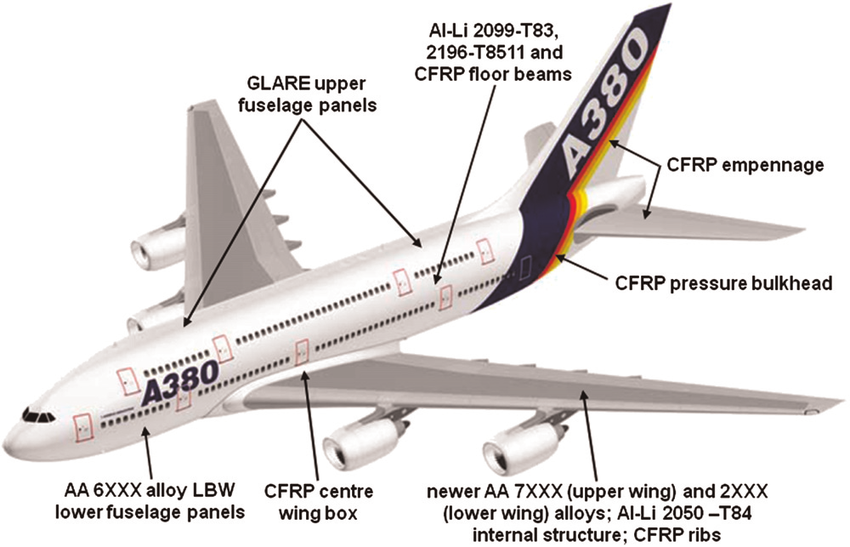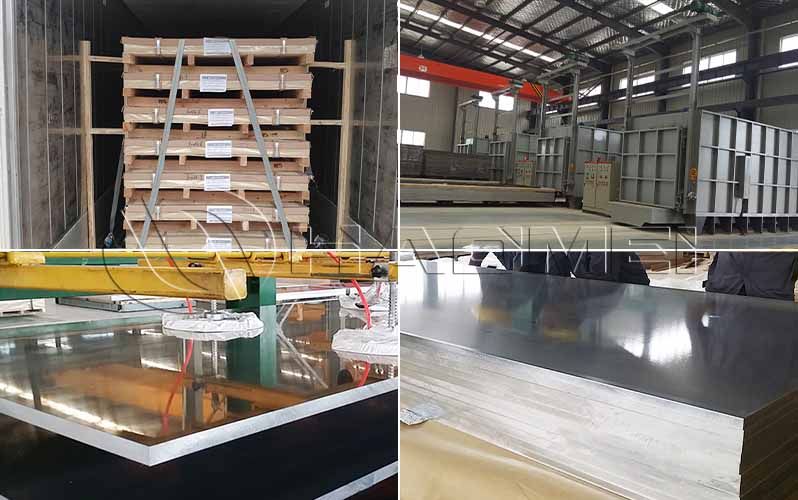Alloy:2024, 2017, 2A12, 7075, 7475, 7050, 7A04, 5A06, 5052, 5086, 6061, 6082
Width: 500mm - 2300mm
Thickness: 0.2mm - 350mm
Port of Loading: Qingdao
Certificated: ISO9001:2015
Aircraft aluminium alloy has three excellent properties in particular that make it so useful in the aviation industry; high strength to weight ratio, ductility and resistance to corrosion. It is also non-magnetic. There is a wide range of variations in the compositions of aluminium alloys for specific functions in aircraft.
Aluminium alloys are designated via a 4 digit numbering system with the first digit representing the alloy group and the other numbers representing the other metals that are present in the alloy. Temper designations are denoted by a prefix such to indicate what type of treatment it has undergone and to what degree. The letters are F, O, H, W, or T to indicate fabrication, annealing, strain hardening, solution heat treatment and heat treatment respectively.
The proportions and constituents of an aircraft aluminium alloy determine the specific properties it exhibits. There are literally hundreds of aluminium alloys in use today in different fields of application. For aircraft, below are the most commonly used ones and why they have been chosen for their respective applications.
2024-T3
2024-T3 is made up of 4.5% copper, 0.6% manganese and 1.5% magnesium. This is a top tier high strength aluminium alloy and coupled with its fatigue resistance, it is one of the most common aircraft alloys. It doesn’t do well with welding but is a good option for repair works as it has an excellent finish. It is not heat treatable.
6061-T6
6061-T6 is made up of 0.25% copper, 0.6% silicon, 1.0% magnesium and 0.25% chromium. This alloy also has good finishing. In addition to that, it offers good corrosion resistance and is very good for welding. Its strength and workability are comparable to mild steel. It is heat treatable.
3003-H14
3003-H14 contains 1.2% manganese and is the most widely used aluminium alloy. It is very easy to work with as it can be extruded, brazed, machined and welded. It is not heat treatable but can develop increased strength from cold working.
7075-T6
7075-T6 is made up of 1.6% copper, 2.5% magnesium and 5.6% zinc. It is commonly used by aircraft manufacturers to strengthen the structure of the aircraft. It has poor weldability due to its copper content but it has great machinability. It is heat treatable.
5052-H32
5052-H32 is made up of 2.5% magnesium and 0.25% chromium. This alloy offers the highest strength in the non-heatable alloy series and can develop increased strength from cold working. It also has excellent fatigue strength, corrosion resistance and workability which makes it suitable for aviation and marine purposes.


Comparison of Aluminium, Beryllium and Magnesium
Aluminium | Beryllium | Magnesium | |
Boiling point | 2494oC | 2770oC | 1107oC |
Density | Low | Low | Low |
Strength | High | High | High |
Toxicity | Non-toxic | Highly toxic | Low toxicity |
Flammability | Nil | Flammable | Highly flammable |
Integrity at elevated temperatures | Maintains its structure at high temperatures | Relative stability at high temperatures | Obeys a unary phase diagram |
Corrosion resistance | High | Medium | Highly corrosive |
Reaction with water and acids | Nil | High | High |
Benefits of Aluminum in the Aircraft Industry
Aluminum used in the construction of aircraft has three main benefits:
• Aluminum is lightweight. Using aluminum significantly decreases the weight of an airplane. Not only does this help the plane stay in the air, but it also makes it more fuel-efficient and able to carry bigger loads.
• Aluminum is strong. The strength of aluminum makes it an ideal replacement for heavier metals.
• Aluminum is extremely resistant to corrosion, which is important in maintaining the safety of an airplane's structure as it flies through a wide variety of environments.


Related Application